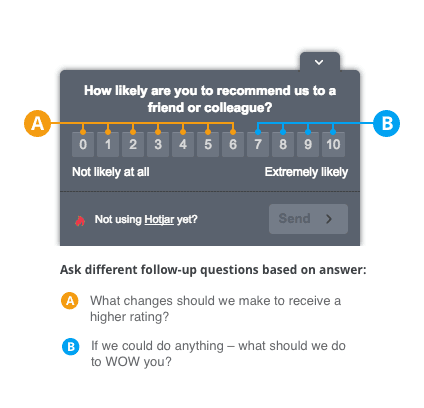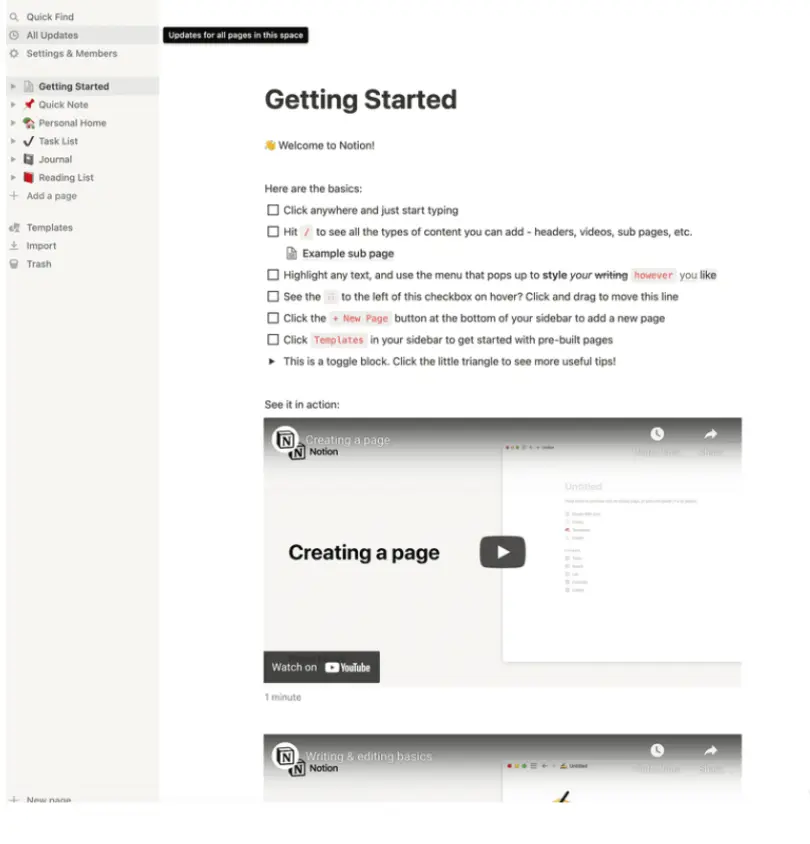Every business owner would agree that an essential need for any business is the customer, and customer satisfaction is key to building a sustainable and profitable business. Because of this, customer success has rapidly become a critical aspect of every business, as it determines the growth and sustainability of any company.
At its core, customer success entails all strategies implemented to engage with customers, improve customer satisfaction and create customer sustainability for any product or service. At the helm of customer success are the Customer Success Managers (CSMs), who manage the Customer Success Teams (CSTs) and all processes and strategies for Customer Success.
To excel in customer success, tracking key metrics is beneficial. This comprehensive guide will explore 15 key metrics to track your Customer Success team’s performance and how they profoundly impact Customer Success.
1.Customer Satisfaction (CSAT) Score
Customer satisfaction is at the core of customer success. The CSAT score measures customers’ satisfaction with your product, service, or interactions with your Customer Success Team. This metric is usually collected through post-interaction surveys or feedback forms and measured as percentages.

A high CSAT score indicates that customers are satisfied with your product and the experience provided for them. This signals to Customer Success Managers (CSMs) that your product is meeting the customer’s needs, which could result in higher retention and less churn. On the other hand, a low score can be a red flag, signaling areas where improvement is needed. Here’s an example.
2.Net Promoter Score (NPS)
The Net Promoter Score measures your customer’s loyalty and willingness to recommend your company to others. It gauges overall customer sentiment and indicates how well your Customer Success Team fosters positive relationships.
NPS surveys often ask customers, “On a scale of 0 to 10, how likely are you to recommend our company to a friend or colleague?” Promoters (those who score 9 or 10) are valuable assets, and CSMs can use the Net Promoter Score to identify and nurture them into brand advocates.

3. Customer Retention Rate
Customer Retention Rate is a pivotal metric for Customer Success. It quantifies the percentage of customers who choose to continue their business relationship with your company over a specific period, typically a year. This serves as a benchmark for customer satisfaction and the effectiveness of your Customer Success Team (CST) at preventing churn.
Customer retention rate reflects customer satisfaction as well as the effectiveness of your Customer Success Manager. A High retention rate indicates satisfied, loyal customers. It is a testament to a Customer Success Manager’s (CSM’s) efforts in nurturing strong relationships, delivering ongoing value, and preventing churn, benefiting both the customer and your company’s long-term success.
4. Churn Rate
Conversely, the churn rate measures the percentage of customers who cancel or stop using your product or service over a period. A lower churn rate is a positive sign that your Customer Success Team successfully mitigates customer losses. CSMs should work on identifying the reasons for churn and implementing strategies to reduce the churn rate, such as personalized onboarding or addressing specific pain points.
5. Expansion Revenue
Expansion revenue tracks how much additional revenue is generated from existing customers through upsells, cross-sells, or expansions. It reflects your team’s ability to grow existing accounts. When CSMs identify opportunities for upselling or cross-selling, they contribute to revenue growth and demonstrate their value by helping customers achieve more with your product or service.
6. Customer Health Score
Creating a customer health score is multifaceted, considering various factors such as product usage, engagement, and support interactions. This score helps identify at-risk customers early, allowing CSMs to intervene and address issues proactively. A high customer health score indicates that CSMs are not just reactive but are actively working to maintain customer health and satisfaction.
7. Response and Resolution Times
Customer satisfaction hinges on the speed and effectiveness of your customer support team. Response and resolution times are pivotal metrics for customer success. They measure how quickly the Customer Success Team acknowledges and resolves customer inquiries and issues. Rapid response times demonstrate attentiveness and prioritize customer concerns, fostering trust and satisfaction.
Efficient issue resolution showcases competence and expertise, further elevating customer trust. A responsive support team can differentiate a company, as customers favor businesses that consistently offer timely solutions. Therefore, Customer Success Managers must prioritize swift responses and efficient issue resolution, as these metrics (First contact resolution rate, Average time to resolution) significantly impact customer satisfaction, retention, trust-building, and competitiveness.
8. Customer Effort Score (CES)
The Customer Effort Score (CES) is a crucial metric in assessing customer satisfaction and the efficiency of your support process. It measures how easily or difficult customers can resolve their issues when interacting with your Customer Success Team. Lower CES scores indicate that customers perceive the support process as smoother and more efficient.
When Customer Success Managers (CSMs) focus on reducing customer effort, it often leads to higher customer retention rates and increased customer loyalty. A low CES score also indicates that CSMs efficiently handle support cases, contributing to productivity.

9. Renewal Rate
As the name implies, the renewal rate calculates the percentage of customers whose contracts or subscriptions are renewed when they expire. A high renewal rate indicates that your Customer Success Team is retaining customers. CSMs ensure customers are satisfied enough to renew their commitment to your product or service. For example, Netflix’s high renewal rate of about 93% can be attributed to its content quality and personalized recommendations. Customers see value and continue their subscriptions.
10. Adoption and Feature Usage
Tracking how effectively customers engage with and utilize your product’s features is very important. It serves as an indicator of whether customers are realizing the total value of the product.
A low adoption rate or limited feature usage can signal potential customer issues or challenges. Customer Success Managers (CSMs) and Customer Success Platforms (CSPs) are pivotal in ensuring customers fully understand and utilize these features. They collect feedback, offer training and support, and proactively reach out to customers facing adoption challenges.
11. Customer Lifetime Value (CLV)
Customer Lifetime Value (CLV) is a vital metric that calculates the total revenue a customer is expected to generate throughout their entire association with your company. A higher CLV signifies that your Customer Success efforts are proficient at maximizing the long-term value of customer relationships. Customer Success Managers (CSMs) are pivotal in achieving this objective.
CLV extends beyond initial purchases, considering the revenue generated from repeat purchases, upsells, cross-sells, and referrals over time. It serves as a tangible indicator of the effectiveness of your Customer Success Team.
12. Customer Feedback and Insights
Customer Feedback and Insights are invaluable resources in the realm of Customer Success. While quantitative data provides essential metrics, qualitative customer feedback offers a deeper understanding of their experiences, pain points, and preferences regarding the product. Feedback collection methods include surveys, interviews, feedback forms, and social media monitoring.
By listening to customers and using their insights to drive enhancements, CSMs enhance the overall customer experience, contributing to long-term satisfaction and loyalty. Airbnb is successful today because it gathers qualitative feedback through guest reviews and host surveys. They use insights to enhance both sides of their marketplace.
13. Team Productivity Metrics
Team Productivity Metrics are fundamental for assessing the efficiency and effectiveness of any team, and your Customer Success Team (CST) is no exception. Metrics like Time Spent on Customer-Focused Activities, Average Response Time to Customer Inquiries, Ticket Resolution Time, Customer Support Ticket Backlog, Task Completion Rate and more provide insights into how well the team operates, manages customer interactions, and handles tasks.
By optimizing productivity, CSMs can devote more time to building strong customer relationships, ultimately improving customer satisfaction, loyalty, and business growth. Shopify’s customer success teams use productivity metrics to support thousands of businesses efficiently. They continually refine their processes to provide top-notch assistance.
14. Customer Success Goals Achievement
Customer Success Goals Achievement is critical to evaluating your Customer Success Team (CST) performance and effectiveness. CSMs typically have predefined goals and Key Performance Indicators (KPIs) that align with the overall objectives of customer success.
Examples of some of these goals are Onboarding Completion Rate, Account Review Frequency and Completion, Support Ticket Resolution Time, Customer Engagement Rate, and churn Rate Reduction.
These goals drive customer-centric activities, consistency in service delivery, and proactive churn prevention. By consistently achieving these goals, CSMs ensure that customers receive the support and guidance needed to succeed.
15. Customer Advocacy
Customer Advocacy is a decisive outcome and metric that reflects the pinnacle of success for your Customer Success Team (CST). It signifies customers who go beyond satisfaction to actively promote your brand through testimonials, referrals, or case studies.
Customer Advocacy is a testament to the exceptional service and support CSMs provide and the quality of your product or service. It leverages the power of satisfied customers to build trust, drive referrals, and contribute to long-term success and growth. CSMs play a pivotal role in cultivating and nurturing advocates by ultimately enhancing the overall customer experience, as seen with brands like Tesla and Apple.
How to Track and Measure These Metrics Effectively
To effectively track and measure these metrics, follow these steps:
-
- Setting Clear Goals and Targets
Define specific, measurable, and achievable goals for each metric. Establish benchmarks and targets to track progress effectively. Clear goals provide CSMs with a sense of purpose and direction, motivating them to excel.
-
- Choosing the Right Tools and Software
Using the right or wrong tools can boost or drain your business. With the right tool, it’s easy to have centralized customer data in a single dashboard view. This makes it easy to read data and interpret it to identify your customers’ pain points and bottlenecks in your processes.
Analyzing your data this way points out your areas of strength as well as areas of weakness where you should intensify your efforts. Churn360 Customer success platform allows you to collect, analyze, and report on metrics efficiently. Having the right tools in place streamlines data collection and reporting, enabling Customer Success Managers (CSMs) to focus on interpreting insights and taking action.
-
- Regularly Analyzing and Reporting on the Metrics
Consistently monitor the metrics and generate reports. Regular analysis helps identify trends, areas for improvement, and opportunities for proactive interventions. In addition, customer success managers (CSMs) should conduct ongoing reviews to meet customer needs and objectives.
To gain deeper insights into Churn360, we recommend setting up a demo with one of our experts for a detailed walkthrough
Book a demo
Strategies to Improve Performance Based on Metrics Based on the tracked metrics
Now that we’ve discussed the metrics to watch out for, here are strategies to enhance the performance of your customer success team:
-
- Addressing Customer Pain Points and Feedback
Your product is only valuable to customers if it can meet their expectations and solve their pain points. Focus on understanding who the customer is, their job-to-be-done, and their fears.
Use customer feedback surveys to collect this information and build it into your buyer persona. Then, work on promptly addressing customer feedback by resolving the issues raised to close the customer feedback loop.
-
- Providing Proactive Support and Guidance
Anticipate customer needs and offer proactive support. Provide step-by-step guidance on maximizing the value of your product or service, helping customers achieve their desired outcomes more efficiently.
One of the best ways to provide guidance is by creating self-support resources. For instance, Notion uses an onboarding checklist to help users understand their product, experience its value, and reach their aha moment faster. As a result, users spend less time trying to figure out their product and more time enjoying it.

-
- Offering Personalized and Tailored Solutions
Tailor your interactions and solutions to each customer’s unique needs. Personalization enhances the customer experience and builds loyalty. Customer Success Managers (CSMs) should take the time to understand each customer’s goals and challenges at various points of the customer journey and implement messages and prompts to make the user flow seamless.

-
- Strengthening Relationships Through Regular Communication
Maintain open lines of communication with customers. Regular check-ins, progress updates, and educational resources can help foster solid relationships and prevent churn. CSMs should act as trusted advisors, consistently engaging with customers to ensure the customer journey with the product is enjoyable.
Conclusion and Final Thoughts on the Significance of Metrics in Tracking Customer Success Team Performance
The impact of a high-performing customer success team extends beyond immediate customer satisfaction; it shapes customer loyalty, advocacy, and revenue growth. Monitoring key metrics isn’t just a routine practice; it’s a strategic necessity for optimizing the performance of your customer success team. These metrics provide valuable insights into customer satisfaction, loyalty, and retention, enabling CSMs to make data-driven decisions and take proactive measures to ensure customer success. Transform your business by automating manual processes and ensuring Customer Success with Churn360 to unlock customer satisfaction today.


